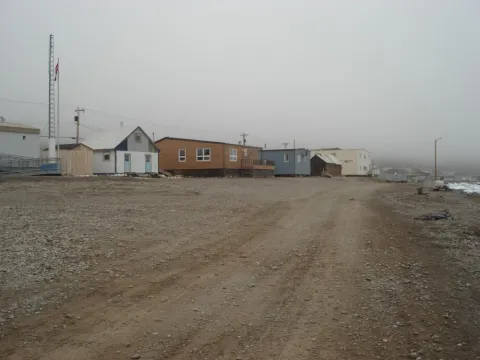The most northern community in Canada, Grise Fiord is located in the High Arctic on Ellesmere Island. Picturesque and remote, it is surrounded by high hills and, for most of the year, sea ice.
Local residents of this 160-person hamlet call Grise Fiord Ausuiktuq, “the place that never thaws out,” referring to the glacier above and behind the mountains of the community. Visitors come to Grise Fiord to witness its spectacular beauty and wildlife. Researchers travel to Ellesmere Island or to the famed “Ancient Forest” on Axel Heiberg Island.
